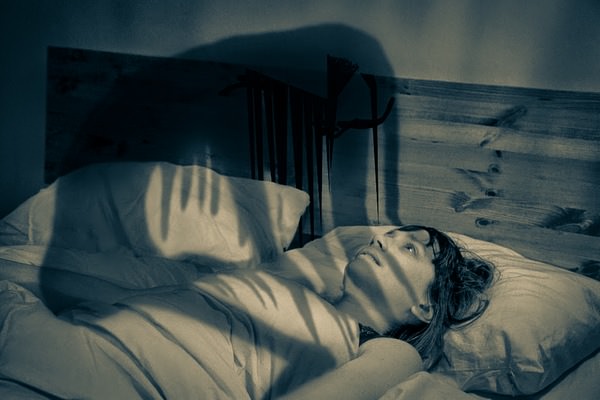
Pressed Down by the Black
Therefore rejoice, ye heavens, and ye that dwell in them.
Woe to the inhabiters of the earth and of the sea! For the devil is come down unto you, having great wrath, because he knoweth that he hath but a short time.
Revelation 12:12
The moniker, Wizard of Oz, has an otherworldly ring to it. Who is this magical wizard? His very name evokes terror among the masses. He must be some kind of king—or a god! However, when Dorothy and her entourage find this mysterious wizard, the disembodied voice of a demigod booms down from a P.A. system-wired heaven, turning them all away. But then, in a twist of fate, Toto, Dorothy’s dog, pulls back a green curtain, only to reveal that the great and mighty Wizard of Oz in nothing more than a feeble, old man operating a switchboard. Realizing he has been busted, Oz shouts into his karaoke mic, “Pay no attention to that man behind the curtain!”
Baland Jalal, a Cambridge University Neuroscientist, in his article entitled, Ever Wake Up and Think You See a Ghost? states, “Dispelling the fear surrounding sleep paralysis is an important means to help people cope with their experience; and, crucially, prevent escalating fear cycles that can lead to worse and more frequent episodes. One way to do this is to disseminate scientific knowledge about the experience.”
Challenge accepted, Mr. Jalal. Let’s pull back that green curtain and see what we are really dealing with.
Let’s start by defining terms. What is sleep paralysis?
Well, that all depends upon who you ask.
If you ask WebMD, they will tell you sleep paralysis is, “Simply a sign that your body is not moving smoothly through the stages of sleep.”
Similar theories are expounded upon by countless masses of unnamed, unsourced sleep researchers, experts, neurologists, and scientists, all saying things like, “Sleep paralysis happens when a person awakens during a stage of sleep known as rapid eye movement (REM). People in this stage of sleep are usually dreaming, but their muscles are paralyzed, which might be an evolutionary adaptation that keeps people from acting out their dreams.”
Jennifer Hines, writing on behalf of the Alaska Sleep Education Center, provides a far less clinical description: “You feel a presence in the room, an ominous shadow in the corner, at the foot of the bed, or even sitting upon your chest. You can’t breathe from the crushing weight of some invisible force pinning you down. Your whole body is alive with an electric buzz as if you’re hooked up to a string of car batteries. You strain with all your might against the paralysis, trying to fight against the weight on your chest, but to no avail. You try to fall back asleep, but the electric hum builds as if every nerve in your body is pulled wire-tight and begins to sing louder and louder to a building crescendo of intolerable proportions. You think, ‘This is it. I’m going to have a heart attack.’ There’s nothing you can do. You’re stuck–fighting between a futile attempt to move against unseen forces keeping you immobile, and the fear of falling back asleep to possibly never wake again. This is sleep paralysis–a waking nightmare.”
Neurologists easily explain these demonic hallucinations away as being the result of stress, sleep deprivation, mental illness, psychosis, trauma, PTSD, neural misfirings, nocturnal defragging, or as one expert claimed—the entity in the room is merely a projection of one’s own spirit doppelganger appearing to appear in the darkness due to a brain-mapping glitch.
New Agers, however, get right to the point.
Erin Pavlina, who, according to her website is a, “world-renowned intuitive counselor with psychic abilities,” writes, “Sleep paralysis is the perfect time to try astral projection. While your body is anchored and unmoving it’s relatively easy to separate your astral body from the physical body. In fact, it’s an ideal situation. During astral projection you want your spirit or soul to get up out of bed while your physical body stays put. This isn’t easy. But sleep paralysis affords you the perfect opportunity.”
Now we’re getting somewhere.
Scientists love demystifying spiritual experiences by reducing them down to a natural or biological explanation. Miracles and answers to prayer are often slit to death upon the edge of Occam’s Razor; so, let’s follow suit and bring a strictly scientific interpretation to these terrifying demonic hallucinations that often accompany sleep paralysis.
Scientifically speaking, it is a cinch to paralyze a human being. In fact, anesthesiologists do it every day. It takes about 60 seconds. And, turns out, surgical teams do not need the aid of powerful demonic forces to accomplish this feat. All they need is a sterile syringe and 0.6mg of Succinylcholine.
Succinylcholine (aka: Suxamethonium Chloride, Suxamethonium, or SUX) is most-frequently used to aid in tracheal intubation (putting a breathing tube down a patient’s throat). Also, very interestingly, as I will explain later, SUX is always administered after a patient has been fully sedated.
So, how does SUX work?
Bear with me here, please. Our muscles are able to move due to electrical signals being sent down a nerve fiber. The “neuromuscular junction” is the meeting point between the end (axon) of a nerve fiber and a muscle fiber. It is at this junction point where the nerve releases a chemical called acetylcholine (ACH). ACH travels from the “nerve side” of the junction over to the “muscle side” of the junction which sets off an electrochemical chain reaction that culminates in muscle contraction.
SUX is an acetylcholine inhibitor, or to be technical, a “depolarizing muscular blocker.” SUX blocks the ACH so that it cannot crossover or bind to the muscles, thus prohibiting the muscles from contracting, resulting in paralyzation. According to medical journals, this paralyzation, “may cause considerable psychological distress while simultaneously making it impossible for a patient to communicate.” Because SUX alone will not render a patient unconscious, not does it possess any anesthetic properties, a patient is always administered SUX and intubated after sedation (in order to avoid “considerable psychological distress”).
Considerable psychological distress? Let’s put a little more color on that.
Gizmodo.com gives us a bit more detail on what a shot of SUX sans sedative would feel like. Dr. Rubidium writes within his article titled, The History of SUX, the World’s Most Discreet Murder Weapon, “You might notice the sting of the injection. Within seconds you’d realize you’re having trouble moving your eyes and fingers, followed by your arms and legs. If you were standing, you’d collapse. In a heap on the floor, you’d realize nearly every muscle in your body was paralyzed. Being fully conscious, your sense of panic would be rising as rapidly as the paralysis was spreading. Swallowing and breathing has become more and more difficult. Slipping into unconsciousness, your last conscious thought may well be, ‘I am going to die.’”
Now might be a good time to re-read Jennifer Hines’ description of sleep paralysis above. Especially the part where she says, “You strain with all your might against the paralysis, trying to fight against the weight on your chest, but to no avail. You try to fall back asleep, but the electric hum builds as if every nerve in your body is pulled wire-tight and begins to sing louder and louder to a building crescendo of intolerable proportions. You think, ‘This is it. I’m going to have a heart attack.’”
Hmmm.
Receiving an injection of SUX without a sedative sounds an awful lot like being “woke up” in the middle of an REM sleep cycle, doesn’t it?
So, now we have two dots. But how do they connect? Do they even connect at all?
I hypothesize that the hellish hallucinations that often accompany sleep paralysis is a spiritual “overlay” or visualization playing out before our eyes, but that the paralyzation itself is not the result of dark powers; but rather the natural experience of being conscious during full-body muscle paralyzation that occurs naturally during REM sleep cycles. The demons are not “causing” the paralysis, they are merely capitalizing on this natural bodily function to maximum the fear factor.
Even more interesting is the fact that the increment of time assigned to SUX paralyzation, REM paralysis, and the typical bout of sleep paralysis all clock in around the 5 to 8-minute mark.[1] Which seems to indicate this is the length of time the body is designed to hover in this paralyzed state before wearing off.
Understanding that your body is designed by God to be in a state of paralysis during REM sleep; and also knowing that being conscious during this paralytic state will cause “considerable psychological distress,” should instantly demystify two-thirds of the sleep paralysis experience.
This still leaves the remaining one-third—you trapped in a dark room with a demonic presence hovering over your bed; but this is where you, like Toto, can pull back the green curtain and remind yourself that this great and terrifying Wizard of Oz is truly nothing more than a feeble, old man with some technological gizmos at his disposal. Amazingly, even this facet of the sleep paralysis experience can be reasoned through.
Isaiah 14:16-17 says, “They that see thee shall narrowly look upon thee, and consider thee, saying, ‘Is this the man that made the earth to tremble, that did shake kingdoms; that made the world as a wilderness, and destroyed the cities thereof; that opened not the house of his prisoners?’”
The “thee” in this passage is none other than Lucifer. Isaiah 14 recounts his initial fall from grace when he was cast down from the spiritual realms. Verse 16 refers to his second fall from grace where he is exposed to the world, and their response will be, “This feeble, old man is the guy that held us in bondage and fear all this time? You have got to be kidding!” What an amazing, table-turning thought!
Remember, just as Jesus Christ is coming again; Lucifer is falling again! You are on the winning team. The powers in your bedroom are powerless. They have a green curtain and a P.A. system—you have the name of Jesus. Call upon the name of Jesus and these cowardly entities will flee.
The righteous cry out, and the LORD hears them; He delivers them from all their troubles.
Psalm 34:17
[1] Succinylcholine paralyzation: 4-6 minutes; first REM cycle: 10 minutes; sleep paralysis episode: a few seconds to several minutes



